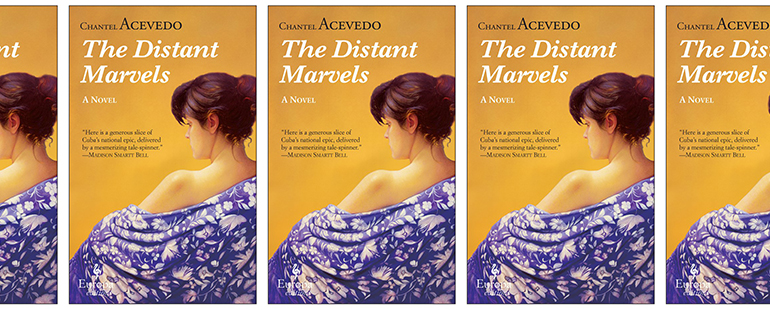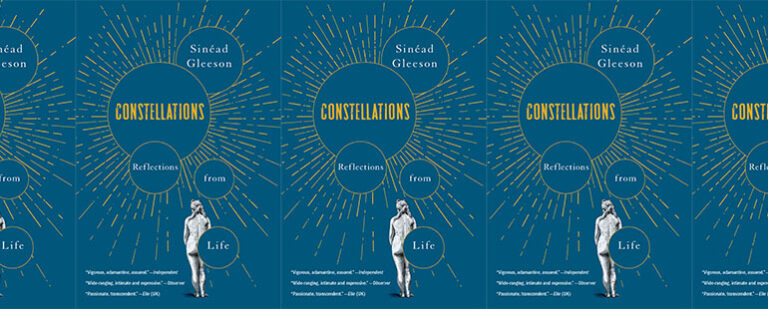The Power of Oral Stories in The Distant Marvels

Chantel Acevedo’s 2015 novel The Distant Marvels follows María Sirena, a sixty-four-year-old widowed former lector (someone who reads cigar rollers stories for entertainment as they work), as she is forced from her home while Hurricane Flora approaches the Eastern Coast of Cuba. The story has two timelines, one of which takes place in the throes of this 1963 storm; the second timeline follows María Sirena’s stories, which span the nineteenth century, about her parents as they try to survive the Cuba’s War of Independence from Spain.
As Hurricane Flora approaches, María Sirena, along with many other women, is evacuated to Casa Velázquez, the mansion-turned-museum of the first governor of Cuba. Most of the women at the Casa Velázquez are upset and worried about their homes and the storm. María Sirena, too, didn’t want to leave her home, but when she is taken, she at least looks forward to seeing the museum. Of maybe getting lost in the story of what happened there. But she is disappointed when she sees that the mansion hasn’t been taken care of. So, in order to entertain herself and the other women in the house, she starts sharing the stories of her life, which results in the other women sharing the stories of their lives. As María Sirena says, “I plumb my memories from the first stories I ever heard, the ones my mother told me of her own youth and mine.” The stories keep the tellers and the told moving forward through their isolation and despair. The Distant Marvels starts with María Sirena wanting her story to end; now, she tells the story, understanding she has no control over her end.
When the book starts, María Sirena considers the “marvels” that her mother Lulu told her as a child to be very much in the past. As she puts it, “When she told me the story, she looked out beyond my face, as if she were seeing them again, and as if she knew that the days when wondrous things happened without explanation belonged only in the past.” In the land where the “real maravilloso” lives, these stories are physical things that the storyteller can see. Without the marvels, María Sirena is ready to die. “But I don’t fear death,” she says. “I am ready to welcome the storm. Let the sea lady from my birth claim me as she’d threatened long ago.”
Long ago, María Sirena was told a story about how a mermaid would take her into the sea for her death. Death, like everything for María Sirena and Acevedo’s other characters, comes to life in images and stories. Some chapters, for example, take us back to the nineteenth century as María Sirena’s parents navigate a war, and María Sirena herself watches the island she was born on fight for its independence. As María Sirena says a little later in the book, “The stories are as true as this room, as the storm outside, as the sharp edge of Mayito’s framed picture in my pocket.” The stories are a room. They are a place she has lived in all her life. They are a place she lives in more as she gets closer to the end of her life.
The stories, however, are also controlled by the teller of the tales. The first time that María Sirena mentions a photo that she won’t leave at the house, that was “lost to me once. I won’t let it happen again,” we don’t get any details of it. It is not Acevedo that withholds information from the reader, but María Sirena, who struggles to remember the painful memory.
But as María Sirena says early in the novel, these are the kind of things that happen when a group of people “all have grief in common.” These stories give the grieving something to focus on besides the mansion that shelters and imprisons them during the storm. As they hear stories of Cuba’s War of Independence with Spain, they know that their own stories, of the communist war that had ended just years before, can also survive.
These stories of tragedy and struggle are hard to own up to. When María Sirena was a lector, she used to tell stories of her and her mother’s life. But instead of telling the stories as part of her history, she made up an author for them, named Carla Carvajal. We see María Sirena flipping pages as she tells stories from memory, showing what depth she is willing to try to separate herself from their pain. Similarly, when María Sirena’s mother, Lulu, talks about María Sirena’s father’s rage, the facts of that rage are not known or understood; instead, Lulu says the source of the rage is “inherited…an old inherited family story about pirates and hidden gold.” The reality of these stories is tough. María Sirena notes when she finds herself subconsciously telling “a part of the story I’d never meant to tell.” She struggles to keep the painful memory inside, while also struggling to let other people know. Telling the stories pains her. But so does the absence of stories. So does the silence. So she does what she always has done—living through the story. This is why understanding the rage through a myth is easier to comprehend and digest. The story of the Cuban people is a tragic one, and they have not been able to write their own history. Death as a mermaid or rage as a pirate curse is more palatable for a people who still struggle with these issues.
María Sirena knows the importance of these stories. At one point, she proclaims, “I am dying. The stories will die with me.” If history is written by the victors, Cuban people had never been victorious yet. They never wrote their histories, but they have spread them, as oral histories have kept family histories alive.
Acevedo writes how outside of Cuba, these “stories are short clips on the radio and television, reduced to a few seconds of information. Our lives are diminishing ripples in vast waters.” Later in the novel, when a reporter from the United States writes briefly about her encounter with María Sirena, she notes that she is “a marvelous storyteller, as well, as is true of many Cubans, for whom it seems the knack of weaving a tale comes naturally.” But this storytelling ability is not to be viewed diminutively. Keeping the stories, the myths, the facts, and the losses of the Cuban people alive is important. Telling these stories is an act of active resistance against the washing away of the Cuban people who have toiled under colonizers and dictators.
With Cuba and the United States having not sustained normal communications, there are many stories that are dying—stories of both those in Cuba and of Cuban exiles who have never returned. These stories, whether married to the truth or myth, are important. And the storytelling itself is important, too. Acevedo chooses to have many of the stories within The Distant Marvels end back in the mansion, and she shows us how María Sirena and the women interact at the beginning or ending of the stories. The stories, then, become “real as this room.”
But the importance of storytelling means the storyteller has to face unfortunate truths, and also has to hear other stories to keep them all alive—María Sirena says, “the voice of the deceased is the first thing one forgets, and I’ve often felt a double grief, for the dead and for their way of speaking, both torn from this world.” This is part of the reason that María Sirena compares her desire to tell (and hear) stories as “an itch beneath my skin, driving me mad, then the need to hear other stories is like a thirst.” She feels the need to pass on other stories, to keep the myths and the stories within the people’s grasp. She doesn’t want these stories to be true, but because they are, they must be passed down.
This piece was originally published on January 6, 2020.


